Akio Kunisawa talks to acclaimed photographer Nicholas Taylor about memories of Jean-Michel Basquiat and the Mudd Club, in an exclusive long-read
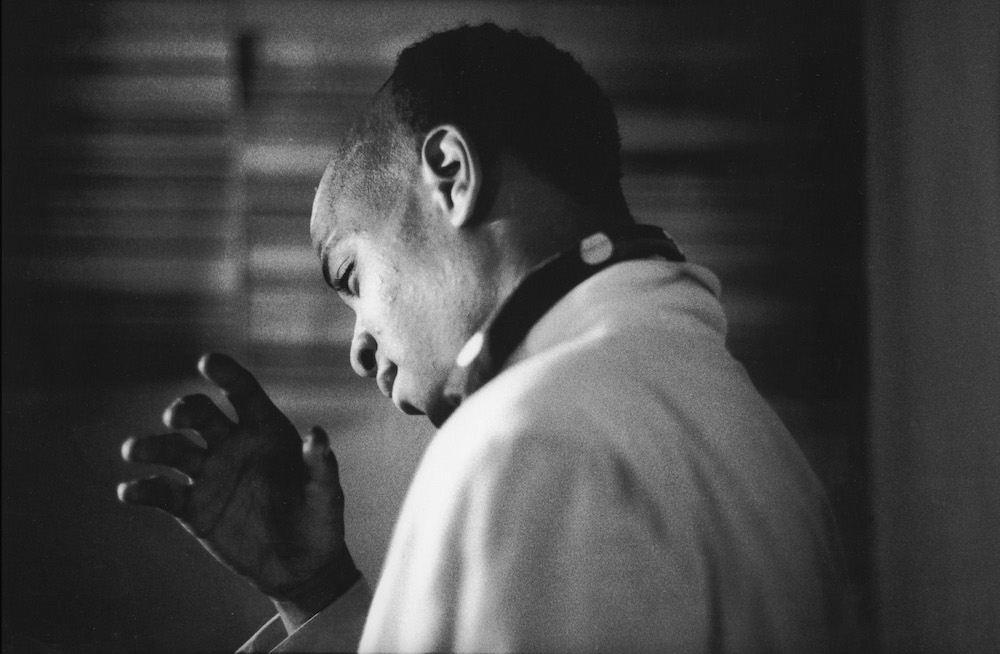
How would you describe New York around the late 70s and 80s?
I moved there in ’77. It was a dark city to me, full of underground subcultures and it seemed so vast. I was low on money so I found a squat building where the landlord vacated and was inhabited by gay artists, like my friend John. He knew a lot about the art scene around Andy Warhol and the very famous disco Studio 54.
Reading John’s weekly copies of Soho News, I started seeing photographs by Marcia Resnick and images of the Mudd Club as well as fabulous articles about a new music scene in downtown. The exciting places were downtown like the East Village and Soho. Almost every day I would take the subway to downtown and hang out in Washington Square and then go to new bars and clubs.
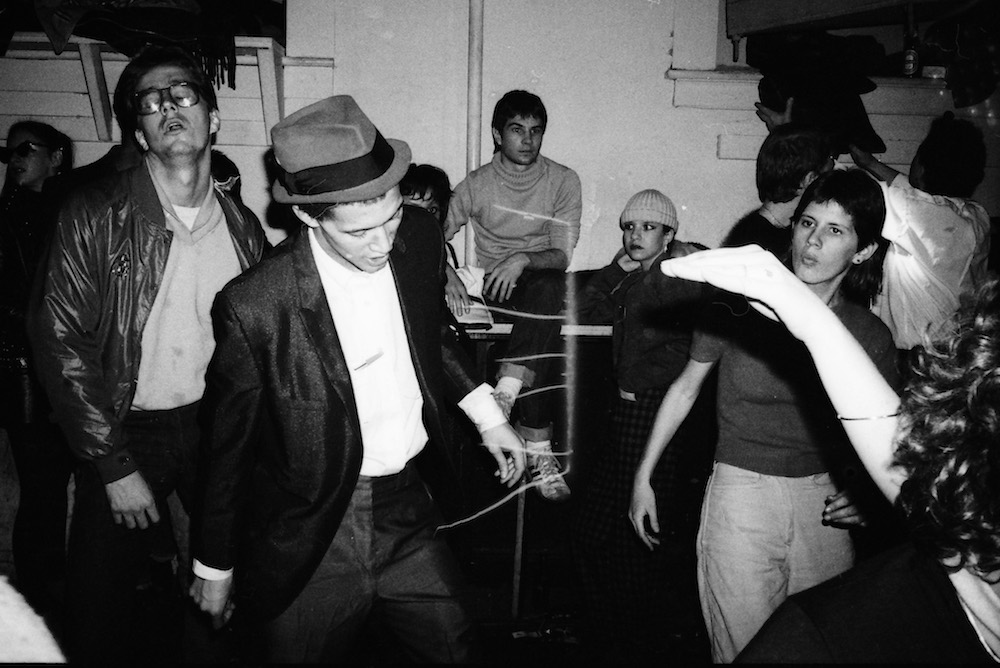
Did you meet a lot of people to take photos in that way?
No, at first, I just observed and wondered how to fit in. I would go to Studio 54, with John and began to meet people. And the Mudd Club… when I went to the Mudd Club, the aura of the place was very magical. Studio 54 was kind of upscale but the Mudd Club was more punk or street. The Mudd Club was the best club ever in my opinion.
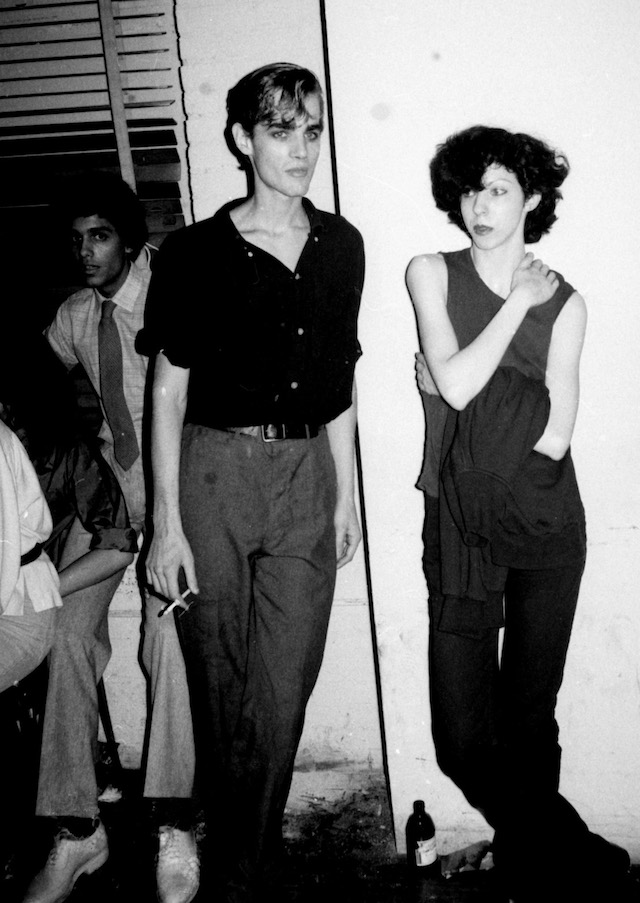
Why?
It was the crossroads of civilization. It had the punks, also Studio 54 people, fashion people, the Teddy Boys with the British accent and the gay crowd, too. The most fashionable punk looks were there. It had the Jamaican rastas by the left side of the dance floor, and tough artists from the East Village. Mick Jagger and Anita Pallenberg chilling there, I saw David Bowie wondering there. The Ramones played there, Talking Heads, B52’s played there. A new thing happened, at the beginning of the New Wave thing. It was more eclectic than CBGBs, which was all punk. It was open till 4 in the morning — and even after 4, they closed the doors and people still danced.
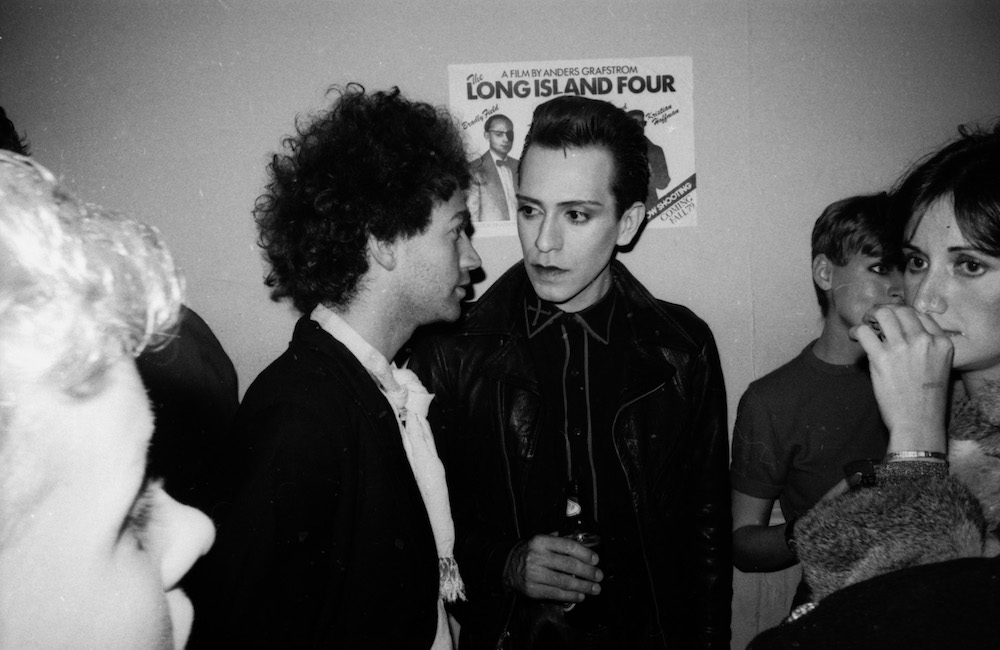
What was the first show you saw at the Mudd Club?
It’s funny because they would have bands from the 60s, too… I saw a band called The Angels, a 60s three girl singing group. Also I saw the soul band Sam & Dave there. Many great bands played there, I saw The Specials, Lydia Lunch, The Contortions, so many exciting bands.
How would you describe the Mudd Club?
First of all, to get into the Mudd Club you have to be dressed cool. Cool enough to get by the doorman behind the velvet ropes. If you dress really good, maybe a new wave look, an artist look, or a tragic punk look, or celebrity-ish, you might get in. And maybe after a few times you go, the doorman says “okay free”, and gives drink tickets, too. On the far side of the dance floor, the Mudd Club had a gate which was like a stage curtain. A steel gate, and when it comes up, then the band is exposed and plays. The stage was very small, 10 meters by 5 meters. There’s a bar and dance floor on the first floor. And to get to the second floor, you had to get by another doorman to check you out and see if you are cool enough. Once upstairs it is kind of a chill out spot for creatures of the night, many illegal things happened here.
The speakers and the sound system were perfect for the music at that time; reggae, new wave and soul music, they played everything that was danceable. They didn’t mix, usually play the whole track to the end and then put the next record on, it wasn’t like a disco. A very eclectic choice of music; reggae, some Rolling Stones music like “Start Me Up,” Ramones like “I Wanna be Sedated.” Music from England, uptempo like Sex Pistols or Killing Joke.
The records, speakers and the sound system were so crisp. Nice treble, middle and bass. The dance floor was parquet dance floor, easy to slide when dancing.
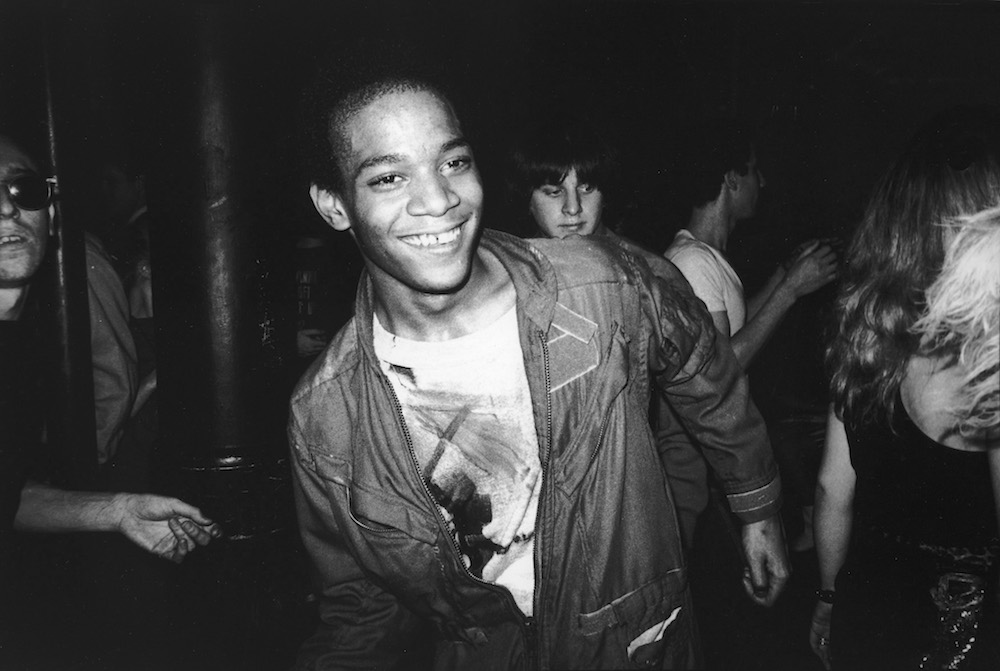
And you met Jean-Michel Basquiat there
My third or fourth trip to the Mudd Club, I was dancing next to a man, and he introduced himself… it was Jean-Michel Basquiat. With all of this action and everything, it was really wonderful to meet somebody, and I was there alone… we danced all night long. One funny thing he showed me was how to steal beers from the bar when somebody just bought it and went to the dance floor.
When Jean-Michel and I were dancing together, so many people were walking by to say hello to him. He was a young man, just turned 18, with a very strange widow’s peak haircut. He introduced himself as just “Jean”, then he said he was SAMO the graffiti writer. Many times I had already seen SAMO graffiti writing all over downtown, it was a kind of funny and political stuff like Oswald and Kennedy. Now here was SAMO standing in front of me.
He was already famous at that time?
No, but getting some attention from his graffiti and his charisma. And he had already been on some Glenn O’Brien TV Party episodes. He was more known in the downtown scene, but he had not painted on canvas yet.
Just graffiti?
Jean did SAMO everywhere he could, but would make art out of many things, for instance, painting on windows and briefcases and he took photos of me that first night we met.
That night I met him, he was homeless, he was a runaway kid and he needed a place to sleep. He told me a lot of stories that night. I was very excited about meeting this kid. He was young black man and extremely handsome. I was maybe 24-25. He was much younger than me.
I thought I don’t know where this kid is gonna go in his life, but it’s really exciting and he’s dressed so cool… you can see how he’s dressed in my photos… white sports jacket with a polka dot shirt, he has that new wave look down.
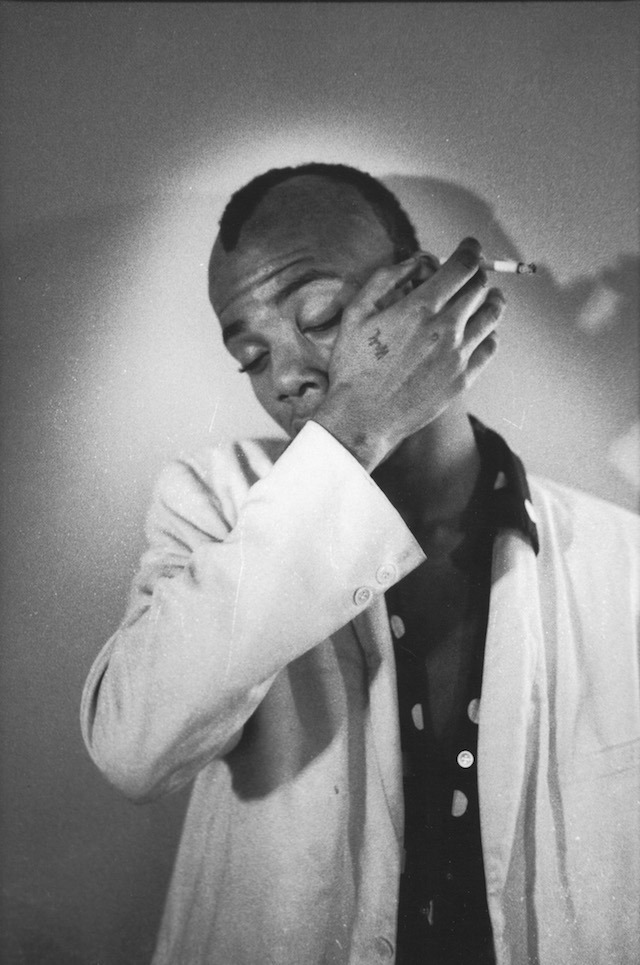
At that time, did you shoot at the Mudd Club?
No, maybe 3 or 4 months later. But what happened was, I went to a party there. An early party at like 7 or 8 in the evening. The club opened at 10, but sometimes they had early parties for events, and at this one Andy Warhol was there on the other side of the room. In Andy Warhol’s magazine “Interview”, in the back there was always Warhol’s pictures of people at clubs. At the Mudd Club I saw him pull out a little camera, it looked like a cigarette box. He flipped down the front, put a flash on top and started taking pictures of people, maybe even me.
I saw Andy and went over to him and ask what his camera was. He was so nice – ‘I have a little Minox camera here, it’s made out of plastic, it’s made in Germany. It has a really good lens. You can put it in your pocket and take it anywhere’. The next day, I bought a little Minox camera for $150 dollars. The same kind Andy had. I bought a little flash I could put on top, and then maybe that same night I went to the Mudd Club with my Minox.
I took mostly pictures of people that I liked or I liked their fashion, the way they look, not so many bands.
It was easy to take photos there, people didn’t care?
No, not once did anybody say “ugh”. I think at the Mudd Club there were many extroverts who wanted their 15 minutes of fame. And eventually I began to know a lot of people there, and they were happy I took their pictures. I didn’t work for a newspaper or anything. I didn’t know exactly why I was taking these pictures, I still don’t know why—maybe ‘cause I saw the way Andy was doing it. I wanted to take pictures of these kinds of people.
Also for me, I wanted to document my own self, what I was doing at the Mudd Club. I didn’t take pictures of stars or celebrities so much, just friends and people around. I thought, maybe I could get these in a magazine, but I had no real connections, I didn’t show them to anybody.
So you built some relationships there?
I met many people, and I thought that by meeting all these people, it would help my career. Maybe meet gallery owners, artists, I could be there assistant. Well, actually I met Jean so it did happen. But at the time I didn’t know he would become so famous.
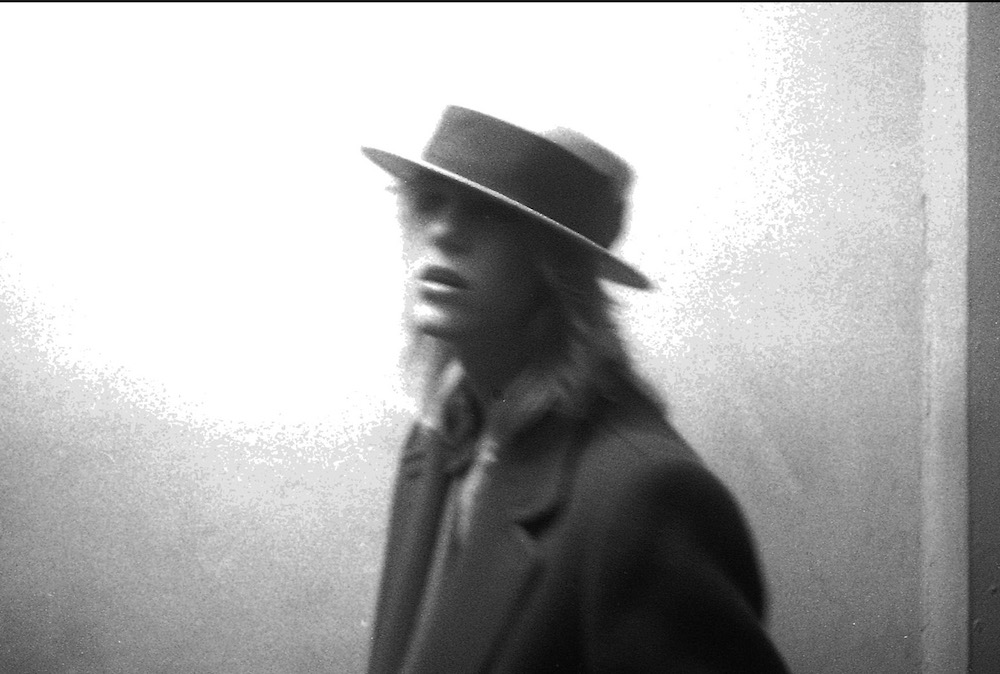
What’s the significance of the Mudd Club, for you?
Historically, it was a bridge from punk to new wave, to hip hop. It was a bridge from an open president like Jimmy Carter, to a closed and cold president like Ronald Reagan. During the Mudd Club is the time when HIV started – some of our friends were starting to die already. They were getting skinny and dying and drug addicts shooting up were spreading, too.
It was right before hip hop, so people still wore vintage suits like Armani and Versace, kind of that New Wave look with the nice jackets, skinny jeans and thin ties. The music wasn’t like heavy metal, it was against that kind of stuff. It wasn’t hippies. It was more like mod; there was punk, there was New Wave and Reggae, and everybody had their “act on”, posing I guess you would say. It’s also the time when analog changed to digital.
It was the last club of that era that had No Wave in it; that downtown atmosphere – kind of rough, very edgy. It was only open three years, so it was very significant. In the 60s there were the rockers and the mods, and at the Mudd Club there was the punk rockers and then the mods also. Thin ties, short hair. The Talking Heads dressed like that, Blondie, James Chance and the Contortions, too.
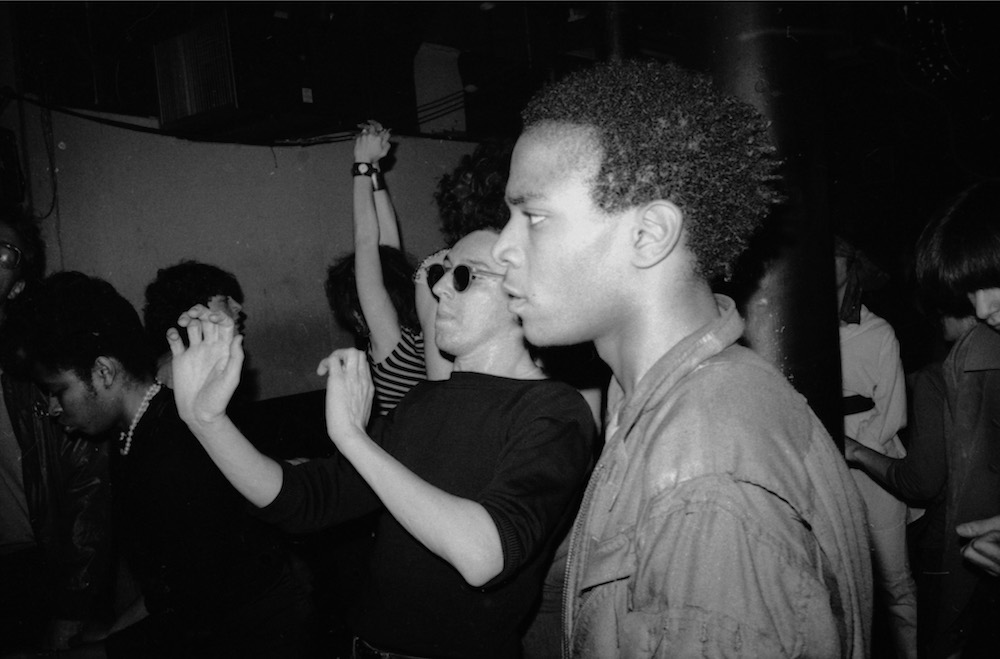
Basquiat often went to the Mudd Club?
Yes, he went there every single night. Even on slow nights when it was so cold or raining and nobody was there. At the end, like around 1982, the cool people didn’t go there anymore, they let too many of the normal dressed people in, just for the money I guess. Sometimes you would go there and not know anybody, because it was a new crowd.
Jean really loved the Mudd Club. It was a good place to chill out, second floor especially. Not as many people got up to the second floor upstairs. More artists were hanging out up there.
When I first met Jean there, January 6th 1979, we went to my home on the train, and at the time in New York City, the inside of the trains were covered with graffiti. He taught me how to read it. It was all squiggly lines to me.
Why did Basquiat do his graffiti only in East Village?
Because that’s where the artists and connections to money were. He wanted to be famous as an artist, so he didn’t do the fancy tags on the subway thing, he did “SAMO” as an expression to help him get known above the trains. His one-liner graffiti sentences were genius statements.
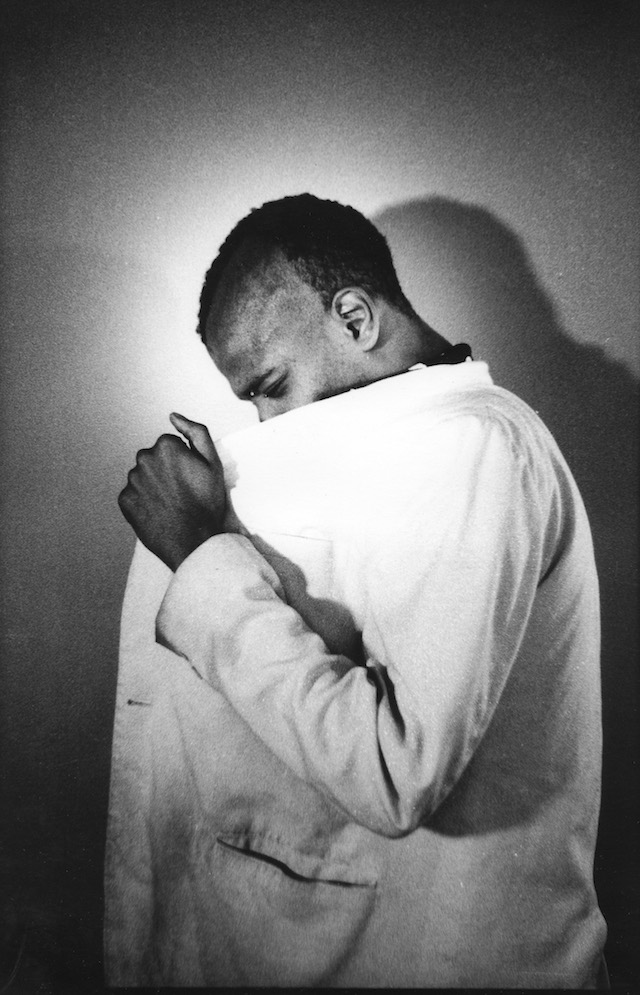
What can you tell me about the photos you took with Jean-Michel Basquiat?
After we got back to my place from the Mudd Club, I pulled down one of those photo paper rolls onto the floor for taking pictures at a fashion shoot. And I had some really cheap light bulbs… nothing special, $1 each with aluminum foil to break up the direct light. Since it’s black and white, that’s all you need. You can manipulate it and make it good. We started to take pictures of each other.
I took 8 frames. Then he took 8 pictures of me. The pictures he took were the only documented 35mm film negatives that he had taken in his life. He had taken some Polaroids later, but I’ve never seen photographs anywhere that Jean has taken with 35mm film.
Maybe he was a bit stiff during our collaboration because he was shy at heart. He wanted the best for himself in pictures taken of him. But as I took my photographs of him he seemed like a method actor getting into a new character for each frame. I was fascinated.
When it came turn for him as a photographer/artist, he put masking tape on my face, he put it all around my head. As a young man, even before he painted, he still had artistic instinct, he wanted to do something different. We just came from the Mudd Club and that was kind of punk, but I think it was more of an art thing. He wanted depth. Those images he took of me remotely look like his “skull” paintings from the mid 80’s. When you take a portrait, it’s very important to hold the camera vertical, not horizontal. Every shot he took of me, he knew this even as an 18 year-old young man. He was a natural artist, the composition shows… he was such a great artist already. No training, all self-taught. We shot the whole roll of 36 frames together.
My photographs are from before he even painted so it’s a little different than the second part of his life when he grew his dreadlock haircut, painted so much, and made thousands and thousands of dollars.
These photographs were shown at BookMarc Bookstore Gallery in Tokyo. The exhibition was called EYE CONTACT. EYE CONTACT also means “I contact,” when you first meet somebody, that’s your first contact.
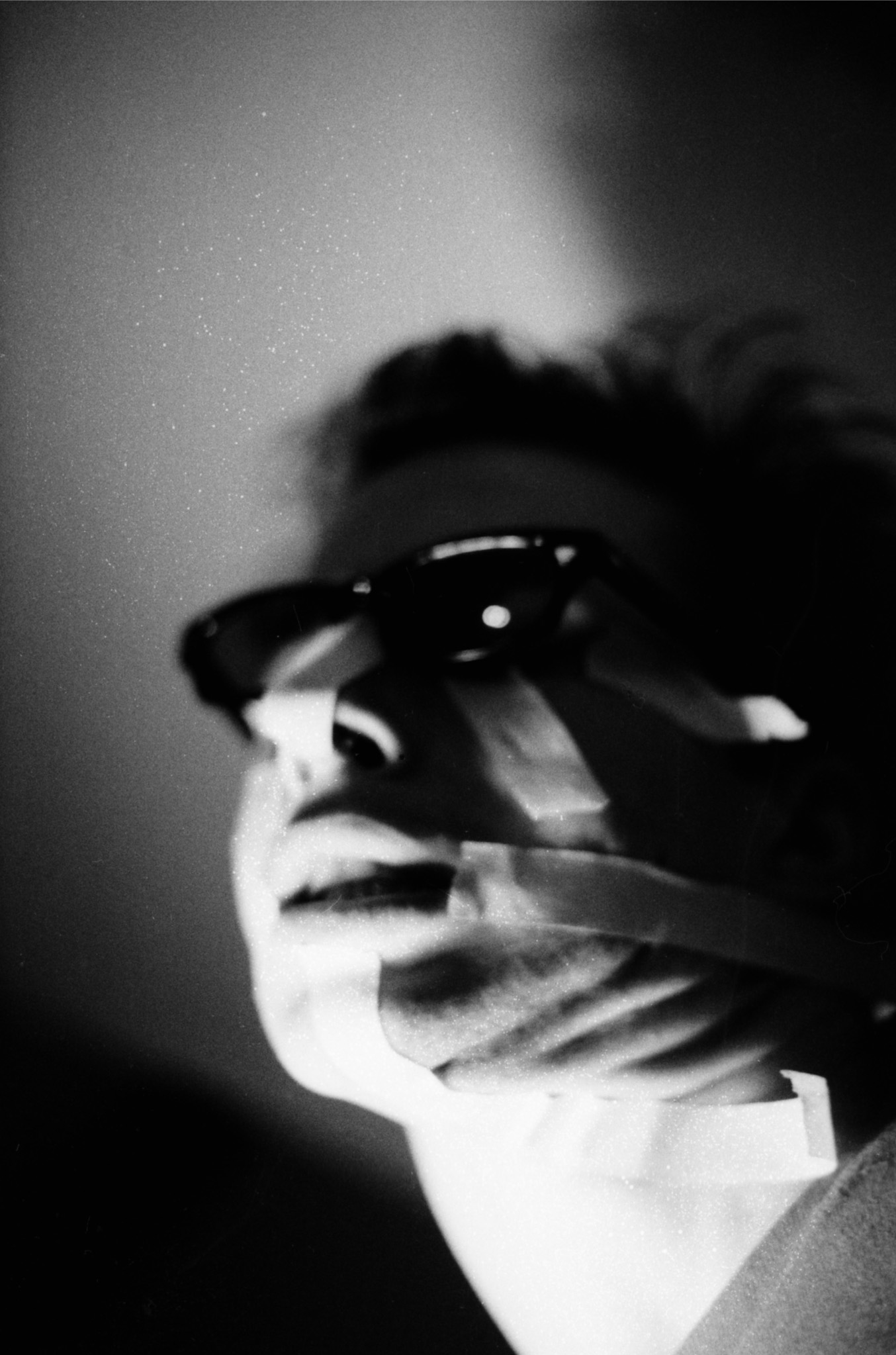
You were friends with Basquiat for quite some time?
We remained friends until the day he died. He died at the age of 27. In our photo collaboration he’s 18. So for 9 more years, very deep, good friends.
Six months after, I met Jean again at the Mudd Club one night. He told me he had a band. The name was Test Pattern, and I became friends with Micheal Holman, the drummer in the band.
When I saw Test Pattern the first time, it was extremely high energy. There was drumming by Michael and they had a trumpet player named Shannon Dawson. Wayne Clifford on the keyboards played abstract, Jean played the clarinet and guitar on the floor with a piece of metal, rubbing on the guitar. Jean also played a Wasp synthesizer. They were my favourite band… I couldn’t believe it.
Would you call what they did no wave?
“No Wave” is a genre of artistic music they were associated with. Everybody played what they felt like. A different drum beat for each song. Michael was a good drummer doing the beat, and Wayne, Shannon and Jean, although they did not know how to play instruments at all, they were so good. It was a very high energy band.
Soon they asked me to join the band. That’s when they changed the name of the band to Gray. Jean named it after a book called “Gray’s Anatomy”. We played maybe about 10 shows in a 2 year period. We had abstract music like Test Pattern but a little bit more thought out, a little bit more self conscious. It was abstract noise, industrial sound music. We all played our instruments unconventionally.
Gray was an ongoing experiment, our music was really different. We all played in a random cause and effect style, reflecting off of each other.
A string on a guitar is wound, so if you take the pick or your fingernails , or play the bridge and loosen up the strings…
Michael played the drums by pulling tape off the drum head and mic-ing it with echo and many other techniques.
We had a set of songs and Jean usually would title them, like; “The Rent”, “Mona Lisa”, “Braille Teeth”, and “The Origin of Cotton”.
Since I lived in a vacant building, we practiced at my place. We could play as loud as we want, as late as we want. It’s big enough to put amplifiers in that room. At 4 in the morning, it’s our building we don’t care, our neighbours don’t care, we can play some totally abstract music. So incredible at that time, like artistic creatures of the night.
Vincent Gallo joined the band too, so another interesting artist contributed. We started getting really big crowds, whenever we played it was packed, total sell-out. We Played the Mudd Club twice. At CBGB’s we opened for DNA and a Lounge Lizards gig was totally sold out.
And then I guess winter of 1982, Jean decided he just wanted to paint. The band stopped at that time.
Michael Holman and I have been carrying the torch throughout the years though and since after Jean died in 1988, we have actually done many live shows and made the “Shades of…” lp.
Jean began to paint while making the movie “Downtown 81”. That’s when he really started to paint, and the paintings he made for that movie started to sell, maybe $1,000 each or sometimes just $200 or $300 each, but they kept selling. He kept doing it. Soon he had shows. He met the writer Rene Ricard who started to write about Jean. Rene penned an article called “The Radiant Child” in the December 1981 issue of Artforum.
Jean’s fame suddenly grew. He was becoming more famous every day. And I heard his first one-man show sold everything on the first day.
At that time, around 1982 he asked me to come over 2 or 3 nights a week to his loft. I watched him make all the early paintings from 1982 till about 1984, his most productive time. As I would leave his loft about 4 in the morning I would turn at the elevator and see about 10 new paintings half done. By the next morning those paintings would be totally changed, morphed into the complex works we see today.
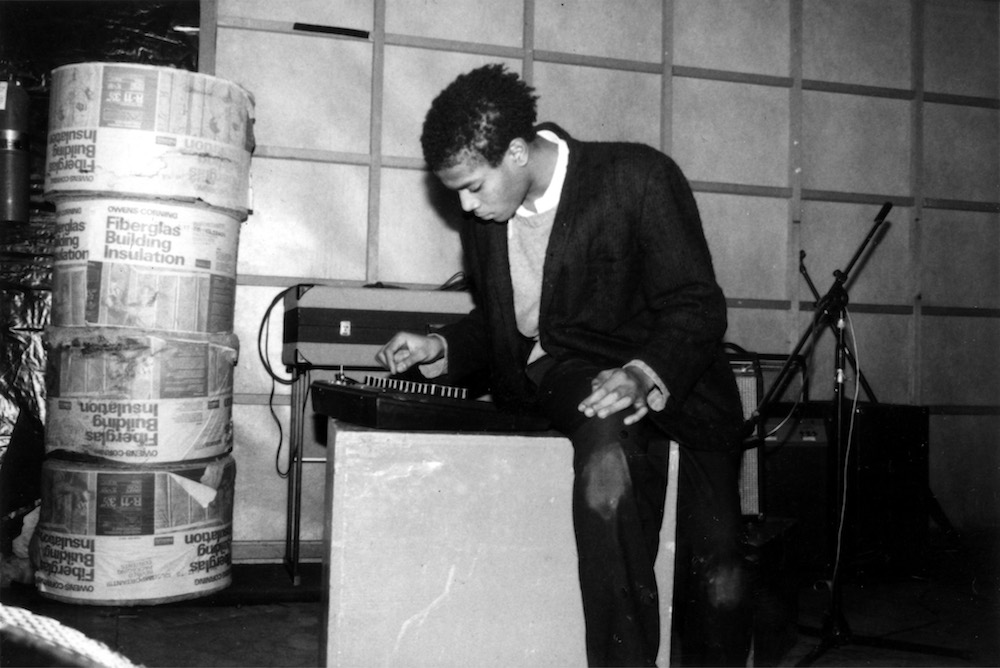
Did you ever live together with him?
We lived together in 1981. He stayed in my apartment for 2 months after filming “Downtown 81”. He had nowhere to stay. He was staying in a hotel with his girlfriend Suzanne Mallouk but he painted on the wall of the hotel, so he got kicked out. I saw him walking down the street with a suitcase.
Now I lived in an apartment downtown because I wanted to be closer to the Mudd Club. When he lived with me, he did the famous “Unknown Notebooks” in my apartment. Rene Ricard was so addicted to drugs, when Basquiat died, he convinced me to sell the notebooks.
Around that time, he asked me to go to Jamaica with him, so we went on a trip together.
Jean-Michel did some research in Jamaica?
He wanted to see the Sunsplash Reggae concerts and we had passes every night. The artist Toxic was with us also for the trip. We had a hotel room but no money. Jean tried to call his gallery in New York but they wouldn’t send him any money. They were making so much money off of Jean and they wouldn’t send him even a penny.
About 1986, I was walking down the street and I see Jean. He asks me: ‘come over to my studio and I can show you all my new paintings’. It was a wonderful all nighter and I was privileged to see so many great new works and bond with my dear friend. He generously gave me a wad of money too, which he did from time to time. That was the last time we seriously hung out.
He did drawings at your place?
One of his most important works he finished in my apartment is called “Arroz Con Pollo”.
When he called up a travel agent in my room, he wanted to travel and get his head straight, so he went to an island called Culebra near Puerto Rico. His mother was Puerto Rican, so he wanted to go to that island. He wrote the word “Culebra” on my plaster wall with an oil crayon.
Then upon his return he took out a roll of canvas and laid it on my floor and said ‘what do you think Nick?’ and I was like ‘the chicken looks a little funny’, so he finished the chicken on my floor. That was “Arroz Con Pollo”. And that’s one of his most famous paintings. It’s a really intense, tragic looking painting.
He also did a little drawing on my door…on the peephole, he did a circle with a bunch of crosshairs. And I still have a sheet of paper where he wrote poetry. I do have some things that he did. I consider these sacred objects made by the master.
The most important thing to me was a little signed piece he left me, one of his early “Anti-Baseball Card Product” postcards. He made handmade postcards and on the back he signed mine. This piece was shown in a very important show at the Brooklyn Museum.
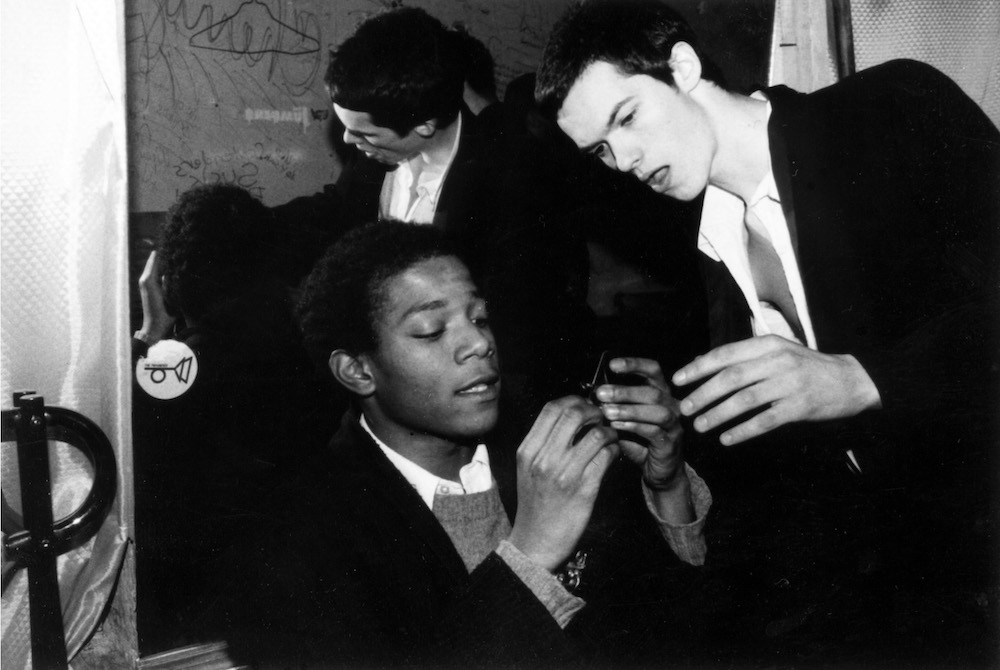
Could you tell me about your work with hip-hop?
Jean named me DJ High Priest. “High Priest” he wrote several times on his paintings and drawings. He named me because I talked about philosophy, that’s what I would do at his loft when he painted. I also DJ’d at his parties.
My first DJ gig was put together by Michael Holman. I opened up for DJ Kool Herc, Afrika Bambaataa and Jazzy J at Club Negril. Soon after that I even opened up for Grandmaster Flash. I learned from these men, watching them up close you can see how they mix and learn.
How would you describe hip hop in the 80s?
When hip-hop first came downtown to New York City, my roommate was Michael Holman who was the manager for the New York City Breakers. He knew all the Rock Steady and Zulu Natioin and he gave me the ability to open for all these great acts.
I had my own style, apart from cutting and scratching really quick. I used tape loops and a quarter-inch tape machine with the tape going around the DJ table. One tape loop, drums and on the other side, violins or effects. I would mix them halfway. When I opened up for the Zulu Nation, I started to learn how to do vinyl.
Overnight my fashion changed from vintage Mudd Club style suits to Adidas running suits. You know those Kangol hats that look like British policeman hats? There was a ghetto hat in New York with no kangaroo logo on it, just plain tericloth. I had one of those. I would stuff it, starch it, keep it nice and straight, and wear one with Pumas. Kangol actually stole that design I guess. I started dressing like that in 1982.
And then there’s the five pillars of hip-hop. There’s rapping, DJ, fashion, graffiti and breakdancing. Those five pillars are a whole cultural art. Like if you’ve got surrealism, painting, philosophy and movies, they’ve got their own pillars. For me it was a lifestyle, early on. I hung out in the South Bronx, I would go to the tough clubs. I was the only white boy many times when I would DJ in South Bronx, 1,000 black teen kids.
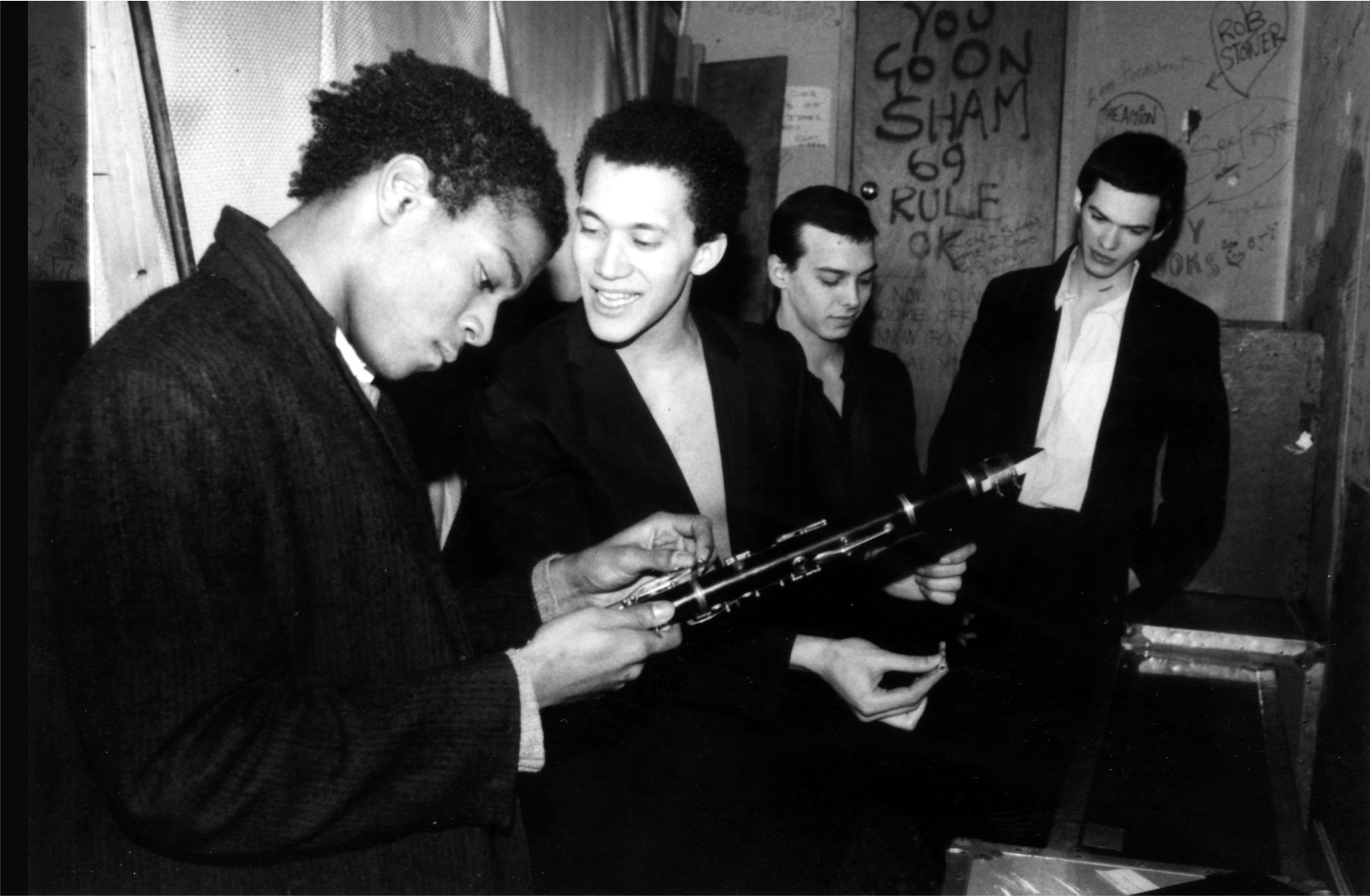
Did you play with Max Roach?
Yes, I played at The Kitchen in 1984 with Fab 5 Freddy on the mic and New York City Breakers. What an amazing thing for me that I was in a band with Max Roach. The show was called Estate Fresh and the New York Times gave a great review.
Fab Five Freddy I remember gave me the job to do musical textures behind Max and Freddy’s rapping. I had straight-up effects records with violins, like the soundtrack for “The Good, The Bad, and the Ugly” layered underneath the great drummer’s beats.
Could you tell me about the 2010 Gray record, “Shades of…”?
It is a 30 year compilation, Michael Holman and I were the main producers. “Justin Thyme” is Wayne Clifford who was in the original band Gray. He has a track on there called “Suicide Hotline” where Jean talks on the telephone to the suicide hotline, it’s a very important piece of historical work on that album. We also have some audio from 1978 or 1979, so we were able to make new files for the album. Michael and I kept working on music through the 80’s on so we had many tracks to choose from that era. We started working around 2005 on “Shades of…”, and it took us about 4 years to put it together. It’s a compilation from 1979 to 2009. Sometimes we go through almost a sampled hip-hop phase, and sometimes we have an old school feeling like we did back in the 70s. We reproduce our 70s sound that was like Gray.
How would you describe the album?
Gray’s music is like no other, although like any other band we go through evolution. First we start out with sound and noise, we end up with rhythm. We had started out with no idea about making music and we ended up actually making music in an ignorant way.
The fact is that Jean gives us a license, the ability to do anything that we want. We can have sounds that are completely different than any other band, and put them on our lp if we want to. We can play tracks in reverse, use those kinds of sounds too. Experimental is the main word, it’s always an unconventional approach.
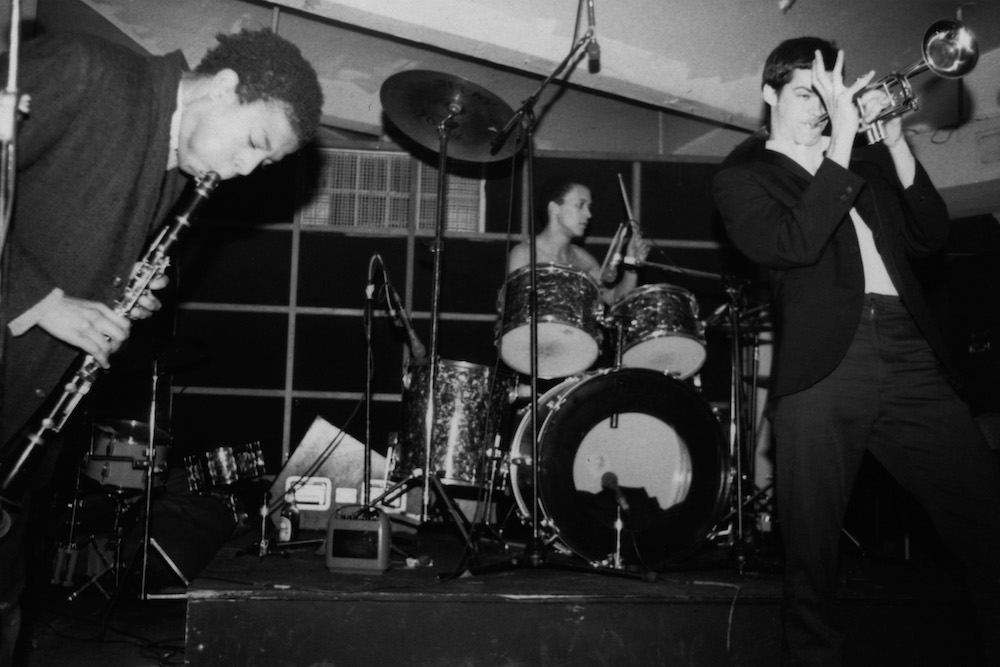
What do you think is the most important thing about Gray?
I would say simply, putting it all together. Jean-Michel Basquiat, Michael Holman, Wayne Clifford and myself, all four of us trying as hard as we can to be artists. We wanted to be very individual, experimental and unique artists. Creativity is infinite.
Last question, out of curiosity, you played a show at the Mudd Club inside of a pretty crazy installation; what was the idea behind that?
We wanted to use scaffolding made out of steel pipes…but instead of going straight up and down the scaffolding pipes go sideways and every which way. We made a structure on the stage that was almost like an ignorant geodesic dome going around us, very random pipes going this way or that way.
Wayne Clifford and Vincent Gallo were belted in so that they were hanging sideways. I was in the very top of the piping, so most people could only see my feet. Michael cleared out a place on the stage so that he was inside the stage and maybe only his head was showing as he was playing drums. Jean found a wooden box outside from Chinatown and brought that inside and played inside of the box. In his box during the show he read his poem “Mona Lisa”—it’s a beautiful poem. That was a beautiful moment in the set.
And with all this strange piping construction that was going on all around us, our set was only 13 minutes long. We worked very, very hard on our set, so that we could do the whole thing very quickly, seven songs maybe two minutes each.
The curtain on the stage is essentially a storefront gate that sounds like when it goes up. I remember looking down at the people and seeing everyone with their mouths open looking at me. Like…“what?”
Once again it was sold out, people were packed in. Celebrities and all kinds of people were there.
Whose idea was the installation?
It was Michael Holman’s idea. We all built it together but Jean kind of didn’t want to help us, so he went outside and looked for his wooden box.
What’s amazing, if I remember correctly, it was our last show together. Jean after the gig told us that he was quitting to paint seriously. Michael and I were so upset because we had to drive the van back to the rental place and we were so depressed.
Our star leader was going to become a famous painter, and we don’t have him anymore.
